The R1 visa is a nonimmigrant (temporary) visa for religious workers who will be temporarily employed in the United States as a minister or in a religious vocation or occupation. The equivalent immigrant visa is the EB4 green card.
- 1.
- 2.
- 3.
- 4.
- 5.
- a.
- b.
- 6.
- 7.
- 8.
- 9.
- 10.
- a.
- b.
Table of Contents
There are separate requirements for the religious worker and the U.S. employer under the R1 visa petition.
Qualified Religious Worker
A qualified person under the R1 visa must (1) have been a member of a religious denomination (that has a bona fide non-profit religious organization in the United States) for at least 2 years immediately prior to filing the R1 visa petition, and (2) has a job offer for a minister position, or a religious vocation or occupation from a qualified U.S. employer.
The original statutory wording for qualified persons for R1 visas can be found in 8 CFR 214.2(r).
Religious Denomination
A religious denomination under the R1 visa petition is a religious group that is governed under a common type of ecclesiastical government and includes at least a common (1) creed or statement of faith, (2) form of worship, (3) formal code of discipline and doctrine, (4) religious ceremonies and services, (5) established places of worship or congregations, or (6) comparable sign of a bona fide religious denomination.
In other words, a religious denomination is a subgroup under a religion that has a common name, tradition, and identity. For example, under the religion of Christianity, there are religious denominations such as roman catholic, eastern orthodox, evangelical…etc.
Minister Position
A person qualified as a minister under an R1 visa petition must be fully authorized or trained by a religious denomination to perform religious worship and other duties that are normally performed by members of the clergy. For example, administering sacraments (religious ritual or ceremony) such as baptism or eucharists. The activities performed by the person must show a rational relationship to the religious calling of a minister, however, incidental duties (e.g., administrative duties) can be included.
Lay preachers (not ordained) are not considered ministers under the R1 visa petition. Under the R1 visa petitions, it is common for the religious denominations to require ministers to have some form of training, certification of ordination, license, or other documentation from accredited theology institutions. Examples of ministers under the R1 visa petition can include priests, pastors, rabbis, deacons, buddhist monks, imam…etc.
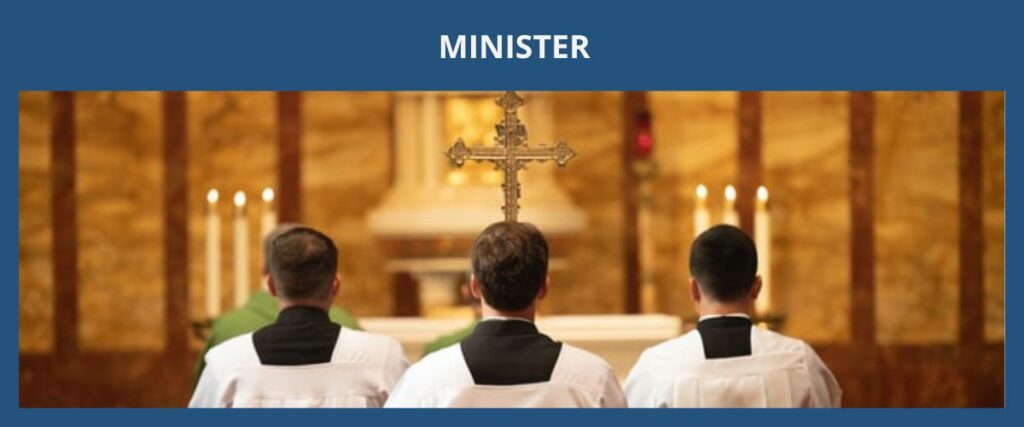
Religious Vocation (Non-Minister Occupation)
A person qualified for a religious vocation under an R1 visa petition must have a calling or devotion to take on a religious lifestyle created by making a lifelong commitment with vows or ceremonies required by the religious denomination. The religious denomination must have a class of members dedicating their life to religious functions and practices as compared to their secular members. For example, nuns, monks, religious sister or brother…etc.
eng-1024x427.jpg)
Religious Occupation (Non-Minister Occupation)
A person qualified for a religious occupation under an R1 visa petition must be engaged in activity that is devoted to traditional religious functions and it must involve inculcating or carrying out the denomination’s religious beliefs and creeds. The person’s position must also be recognized as a religious occupation under the religious denomination. Administrative or supporting jobs performing nonreligious functions (e.g., clerical workers, maintenance workers, janitors, donation solicitors, fundraisers, or other similar positions) that do not directly involve spreading the religious denomination’s teachings are not qualified as religious occupations. Religious occupations also do not include volunteers, religious study, or training for religious work.
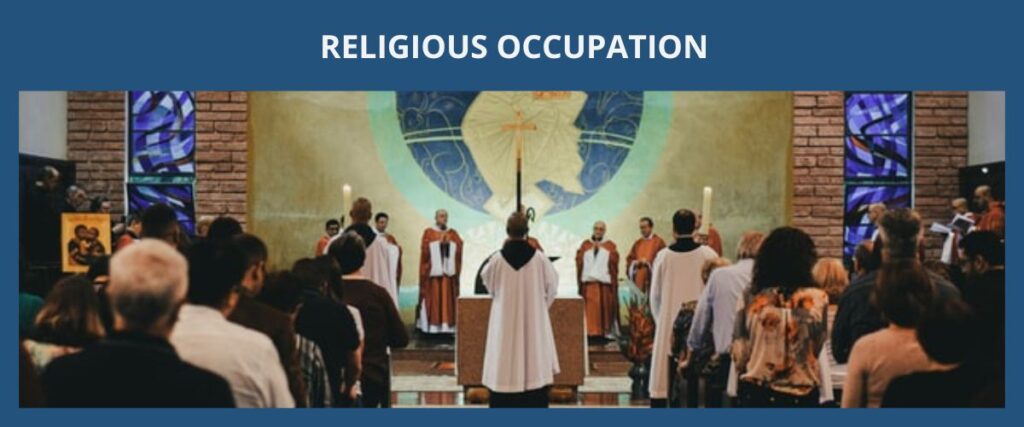
Qualified Religious U.S. Employer
The U.S. employer must provide an IRC §501(c)(3) determination letter that shows the religious organization itself or the group that it belongs to is exempt from being taxed by the IRS. The U.S. employer’s tax exemption can be in 1 of the 3 following forms:
- A non-profit religious organization in the United States
- A religious organization authorized by a group tax exemption holder to use its tax exemption
- A non-profit religious organization affiliated with a religious denomination in the United States
-eng-1024x427.jpg)
The initial R1 visa grants a period of stay for up to 30 months and the renewal (extensions of stay) is granted for up to an additional 30 months until the maximum limit of 5 years (60 months) is reached. Any time spent physically outside the United States can be recaptured for the maximum limit of 5 years of the R1 visa status. After the maximum 5 years of the R1 visa status is reached, the person must then remain physically overseas (outside the United States) for at least 1 year before filing for a new R1 visa petition. The exception to the 5-year limitation is when the person:
- Resides overseas and commutes regularly to the United States for part-time employment
OR
- Did not reside continually in the United States and the employment in the United States was intermittent, seasonal, or was in total six months or less per year
-eng-1024x427.jpg)
The R1 visa has four main requirements that need to be satisfied: evidence must be provided to the USCIS to show that: (1) the person has been a member of a religious denomination (that has a bona fide non-profit religious organization in the United States) for at least 2 years immediately prior to filing the R1 visa petition, (2) the U.S. employer is either a non-profit religious organization in the United States or a non-profit religious organization affiliated with a religious denomination in the United States, (3) the job offered in the United States is a compensated (salaried or unsalaried) position that requires at least 20 hours per week (or an uncompensated position that is a part of an established international program for certain missionary work), and (4) the person will work as a minister in the religious denomination, or in a religious vocation or religious occupation.
Documents Required for the R1 Work Visa (Religious Worker)
The evidence provided to the USCIS for the R1 visa must show:
The original statutory wording for the evidentiary requirements of the R1 visas can be found in 8 CFR 214.2(r)(4).
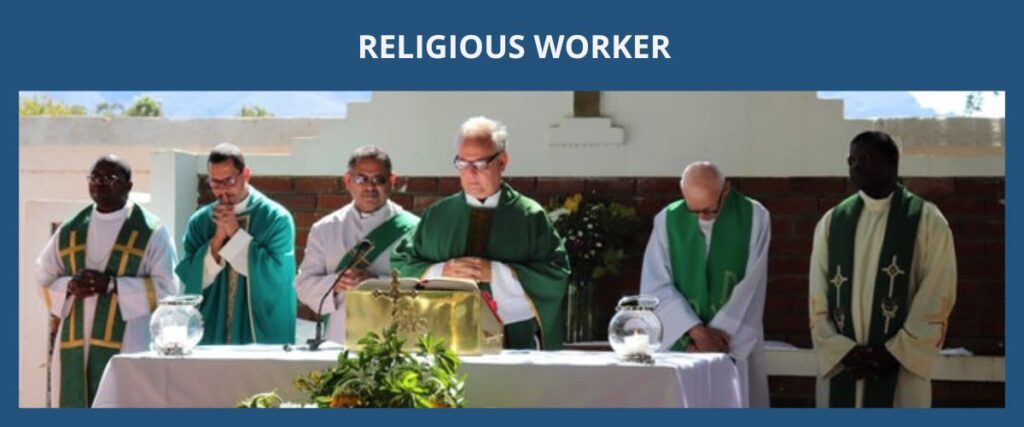
The total time an R1 visa takes is consisted of the processing time for the (1) R1 visa petition (Form I-129) with the USCIS and the (2) visa application (DS-160) at a U.S. consulate or embassy overseas if the person is not already in the United States or is ineligible to do a change of status within the United States.
Factors that influence the R1 visa petition processing time usually include but are not limited to if there was any Request for Evidence (“RFE”) issued, and the caseload of the USCIS service center and the U.S. consulate or embassy.
Premium Processing for Form I-129 (Expedited Service)
A rough estimate for the Form I-129 petition for the R1 visa is around 6 to 12 months. However, a 15-day premium processing (Form I-907) is available for the Form I-129 part of the R1 visa petition. Premium processing is an optional expedited service where the USCIS guarantees that the case will be processed within 15 calendar days (not business days). When a notice of intent to deny (NOID) or a request for evidence (RFE) is issued, a new 15 calendar days will start when the USCIS receives a response from the applicant. If the USCIS fails to process within the time frame, a refund of the service fee will be given and the case will continue to be expedited. Please note that USCIS’s guaranteed response may be an approval notice, denial notice, notice of intent to deny (NOID), request for evidence (RFE), or open an investigation for fraud or misrepresentation.
The current premium processing fee for the R1 visa is $1500 USD and it can be requested when the original petition is submitted to the USCIS or an upgrade to premium processing can be done when the case is pending.

After the USCIS approves the R1 visa petition (Form I-129), the person will then need to change into their R1 visa status. There are 2 ways to change into the R1 visa status: change of status (done in the United States) and consular processing (done outside of the United States).
Change of status is usually for a person who is already in the United States with another valid nonimmigrant visa status and has maintained a lawful visa status throughout their time in the United States. On the other hand, consular processing is for a person who lives outside the United States or for a person who is ineligible to change their status in the United States due to noncompliance of U.S. immigration law (e.g., overstayed on their previous visa status, worked when they did not have valid U.S. work authorization, the visa status they used to enter the United States does not allow them to change into another type of visa status, etc.)
For a person who is residing overseas (outside the United States) or a person who is ineligible for change of status with the R1 visa petition (Form I-129), consular processing must be done to obtain the R1 visa status. Consular processing involves the person attending an in-person interview at the U.S. consulate or embassy usually in the person’s home country. In certain circumstances, a person can do consular processing in another country as a “Third Country National.”
After the interview approval at the U.S. consulate or embassy, the person would have to be admitted entry into the United States by the CBP officer at the border (usually at the airport) which means that the person would have to physically enter the United States as the final step for the R1 visa status to be activated.
For a person who is already in the United States with another valid nonimmigrant visa, there are usually two options available to obtain the R1 visa status:
(1) Change of Status: this is the more commonly chosen option where the person states that they would like to change their status without leaving the United States in their R1 visa petition (Form I-129). If the person is eligible (no violations of U.S. immigration laws), then their nonimmigrant visa status will be changed upon the approved employment start date listed in the R1 visa petition. In cases where the person’s change of status request is denied or the person needs to change it into consular processing, an application for action on an approved application or petition (Form I-824) may be required.
(2) Consular Processing: this must be chosen if a person cannot show that they have maintained lawful visa status in the United States or for any other reasons such as the person needs to travel internationally before the R1 visa petition is approved.
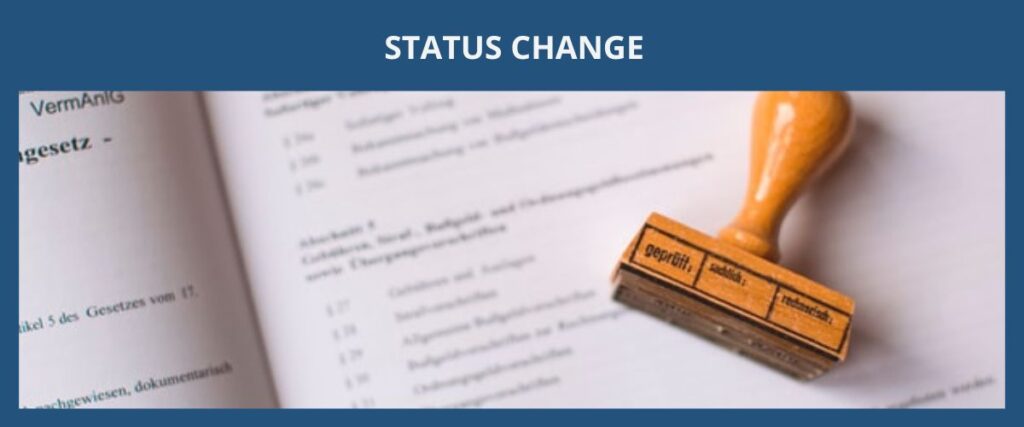
A change in employment for the R1 visa worker usually means that (1) the person changes to a different employer, (3) the person works for more than one employer, (4) the person’s employment was terminated earlier than their visa status expiration date, or (5) there was a material change in the person’s employment or their R1 visa eligibility.
Change in Employer
If the R1 visa worker changes to a different U.S. employer, a new R1 visa petition must be filed and the R1 visa worker cannot start working until the new R1 visa petition is approved.
Concurrent Employment
The R1 visa worker can work for more than one employer at the same time, however, all employers would need to file for a separate R1 visa petition and the work can only be in a minister position or a religious occupation or vocation (which means that work other than in a religious capacity is not allowed).
Amended Petition
An amended R1 visa petition would be required if there is a material change in the terms and conditions of the R1 visa worker’s employment or in the R1 visa worker’s visa eligibility. In some situations, an approved amendment may be required before the person can work at a new location if it was not listed in the original R1 visa petition.
Early Termination
If the R1 visa worker’s employment was terminated before their visa status expiration date or the R1 visa worker is working less than the required number of hours, the employer must notify the USCIS within 14 days.
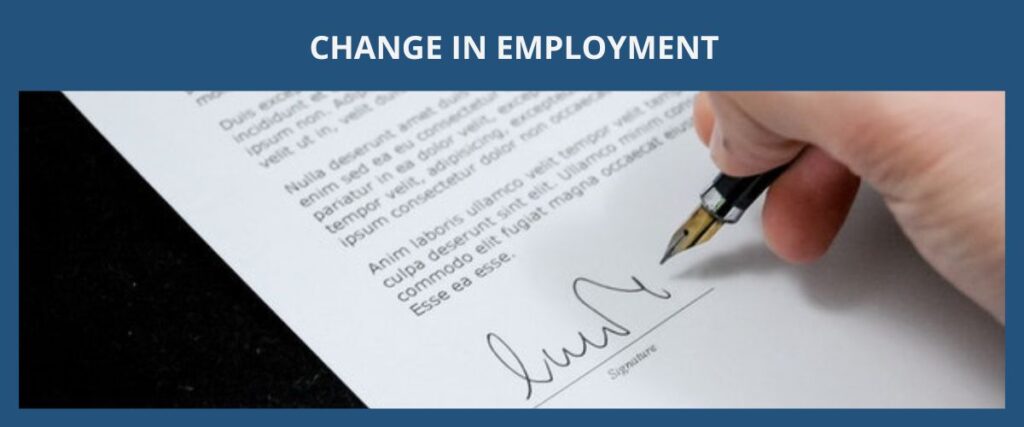
The USCIS conducts random announced or unannounced onsite inspections of religious U.S. employers of R1 visa workers before and after the R1 visa petition is approved. This is to combat and deter fraudulent R1 visa filings. The site visit is valid for 5 years and can be used for different R1 visa petitions.
Site inspections that are done before the R1 visa petition is approved, would be for the USCIS officer to verify that the place of congregation or worship actually exists. Site inspections that are done after the R1 visa petition is approved, would be for the USCIS officer to verify that the R1 visa worker’s compensation, work hours, and duties are correct.
The site inspections can include a tour of the facilities (e.g., the U.S. employer’s headquarters, satellite locations, the R1 visa worker’s work and living locations), interviews with the officials of the organization, and reviewing organizational records related to the R1 visa petition.
Dependent family members (spouse and unmarried children under 21 years old) of R1 visa workers are allowed to stay in the United States under the R2 visa status but they are not allowed to work. Studying is allowed for R2 visa holders.
Dual intent visas allow the foreign person to have both an intent to temporarily stay in the United States and an intent to permanently stay in the United States. The intention to permanently stay in the United States can be shown when the foreign person has a pending green card petition with the USCIS or an approved labor certification from the U.S. Department of Labor.
The R1 visa is a dual intent visa which means that it is possible for the person to have a green card (permanent residency) petition pending while still being able to maintain and extend (renew) their R1 visa status in the United States. In addition, it does not require the R1 visa worker to have a home address overseas (residence abroad) unlike most nonimmigrant visas.
The R1 visa is for religious workers who have been a member of a religious denomination (that has a bona fide non-profit religious organization in the United States) for at least 2 years immediately prior to filing the R1 visa petition and have a job offer from a U.S. employer for a position as a minister or a religious occupation or vocation.

The main difference between a green card and a temporary work visa (such as an R1 visa, H1B visa, L1 visa, O1 visa, P1 visa, TN visa, E3 visa) is that a green card holder can freely change jobs among different employers without needing additional filings or approvals from the U.S. government. Also, unlike temporary work visas, green cards are permanent so there is no set maximum time on how long a green card holder can stay in the United States.
When the R1 visa workers decide that they would like to live in the United States permanently and do not want to be subject to the time limitations or the constant filing requirements to extend (renew) their temporary work visa, the next step for them is to file a green card petition. The EB4 green card petitions for religious workers are usually used by R1 visa workers because of the similarity in the requirements of the two visa categories. The main difference in visa requirements between the R1 visa and the EB4 green card is that the religious worker under the EB4 green card is required to have an additional 2-year religious work experience before filing for their EB4 green card petition.
The EB4 green card for religious workers is relatively fast because unlike most employment-based green card petitions, the EB4 green card petition does not need to go through a lengthy PERM Labor certification process. The EB4 green card petition can be filed by the religious worker themselves (i.e., self-sponsor) but a U.S. employer is still required. In most cases, the transition from an R1 visa to an EB4 green card with the same U.S. employer is relatively seamless (i.e., the religious worker will already be in the United States with an R1 visa status and should have already satisfied the additional requirement of the 2-year continuous religious work experience).
Furthermore, a person can qualify for an employment-based green card no matter where they are currently residing in the world. There is no pre-requisite as to the person being in some type of nonimmigrant visa status (such as an R1 visa) or having an educational degree from a U.S. school. In other words, a person who does not have a U.S. degree and has never been to the United States can still qualify for an employment-based green card. Thus, even if a person is not in an R1 visa status yet but does have the qualifications for a R1 visa, they can alternatively choose to file for an EB4 green card petition instead.
If you have an R1 work visa (Religious Workers) immigration question, please fill out our contact us form or send us an email with some basic information about your background and your immigration needs. We will do our best to respond within 48 hours.
How we can help?
Kylie Huang Law’s immigration attorney will help identify whether the R1 visa is the appropriate nonimmigrant visa category for the client’s (or the client’s beneficiary’s) professional background and if there are other visa options for the client (or the client’s beneficiary). We will work closely with our client to prepare a convincing case for their (or it’s) R1 visa petition and we will also strategize on how the R1 visa petition should be presented to achieve the best chances of approval. It is strongly advised and common practice to retain an immigration attorney for an R1 work visa petition due to the complexities in the immigration process and visa requirements.
What does the typical process look like to retain (hire) us?
- Step 1:
- Step 2:
- Step 3:
- Step 4:
- Step 5:
- a.
- b.
- c.
- Step 6:
- Step 7:
- Step 8:
- Fill out the form (with some basic information on what your immigration needs are)
- Sign up and log into the client portal to schedule an appointment online
- Attend scheduled appointment (typically a phone call or zoom meeting)
- Retainment (signing a contract to hire us)
- Start processing case
- Gathering required documents
- Preparing paperwork
- Confirming contents of documents that will be submitted
- Filing the case
- Following up on the status of the case
- Close the case when a final determination is issued
- Step 1:
- Step 2:
- Step 3:
- Step 4:
- Step 5:
- a.
- b.
- c.
- Step 6:
- Step 7:
- Step 8:
- Fill out the form (on what your immigration needs are)
- Sign up and log into the client portal to schedule an appointment
- Attend scheduled appointment (typically a phone call or zoom)
- Retainment (signing a contract to hire us)
- Start processing case
- Gathering required documents
- Preparing paperwork
- Confirming contents of documents that will be submitted
- Filing the case
- Following up on the status of the case
- Close the case when a final determination is issued
- Step 1:
- Step 2:
- Step 3:
- Step 4:
- Step 5:
- a.
- b.
- c.
- Step 6:
- Step 7:
- Step 8:
- Fill out the form (on what your immigration needs are)
- Sign up and log into the client portal to schedule appointment
- Attend scheduled appointment (typically a phone call or zoom)
- Retainment (hire us)
- Start processing case
- Gathering required documents
- Preparing paperwork
- Confirming content of documents that will be submitted
- Filing the case
- Following up on the case status
- Close the case when a final determination is issued

